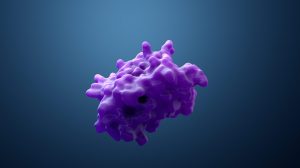Definition
noun, plural: acrocentric chromosomes
A chromosome whose centromere is subterminal resulting in its q arms being longer than its p arms
Supplement
The centromere is the dense, constricted region in a chromosome. It contains highly-specialized repetitive DNA sequences (e.g. satellite DNA) that are packaged into heterochromatin. The centromere serves as the site for kinetochore assembly and therefore it is essential during the alignment of the chromosomes at the metaphase plate and the subsequent segregation of chromosomes during cellular division. The presence of the centromere results in the characterization of the chromosomal arms. The arm that is relatively shorter is called p whereas the one that is longer is called q. Based on the position of the centromere, the chromosome may be described as metacentric, submetacentric, acrocentric, telocentric, subtelocentric, and holocentric.
An acrocentric chromosome is a chromosome whose centromere is subterminal. The centromere is closer to the end rather than the center. It should not be confused with subtelocentric chromosome wherein the centromere is comparatively nearer to the end than that of the centromere of an acrocentric chromosome.
In humans, chromosome 13, chromosome 14, chromosome 15, chromosome 21, chromosome 22, and Y chromosome are acrocentric.
See also:
Dictionary > Acrocentric chromosome
You will also like...

The Homo Species
The evolution of the species of the genus "Homo" led to the emergence of modern humans. Find out more about human evolut..

Protein Variety
The sequence of amino acids determines the type of protein. Protein is synthesized according to the sequence of nucleoti..

Fish
The sea was teeming with life. Eventually, through reproduction and continued variation, fish came about. There are over..

Stems
Stems primarily provide plants structural support. This tutorial includes lectures on the external form of a woody twig ..

Sigmund Freud and Carl Gustav Jung
In this tutorial, the works of Carl Gustav Jung and Sigmund Freud are described. Both of them actively pursued the way h..

Animal Water Regulation
Animals adapt to their environment in aspects of anatomy, physiology, and behavior. This tutorial will help you understa..

